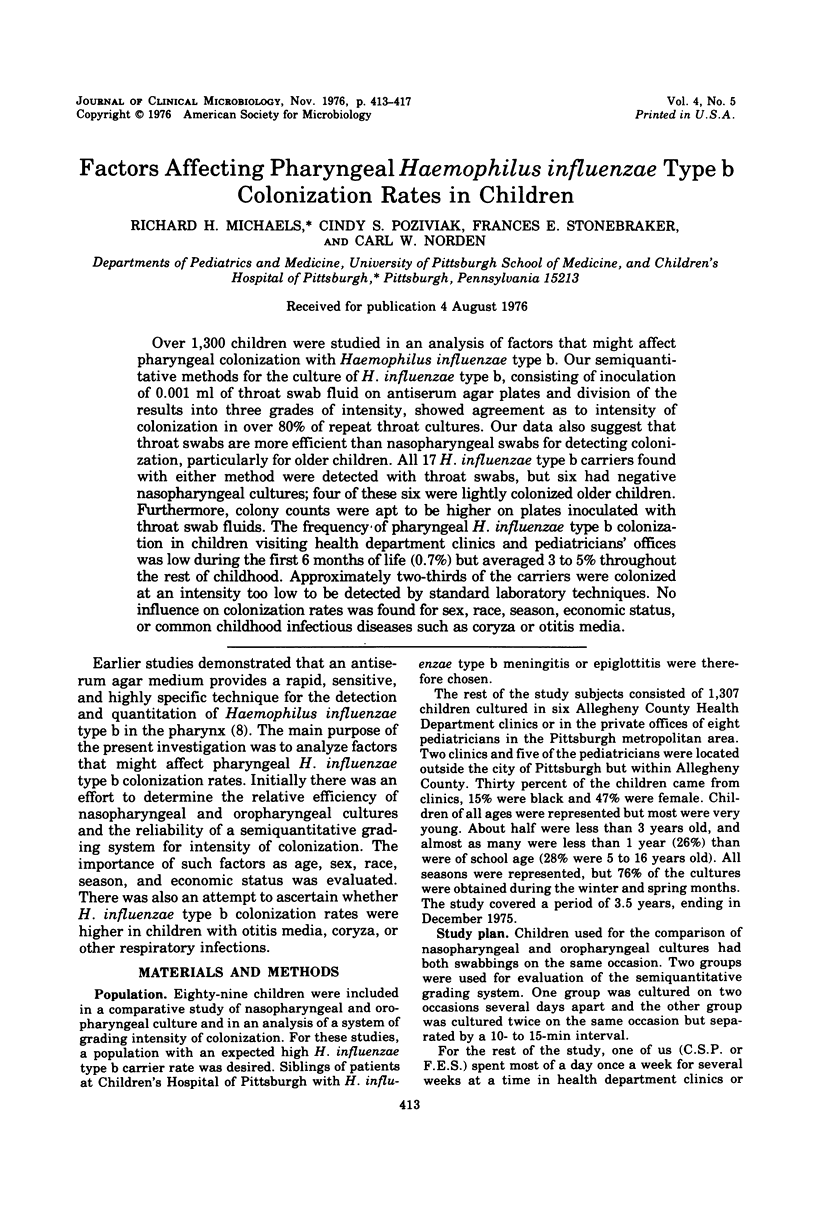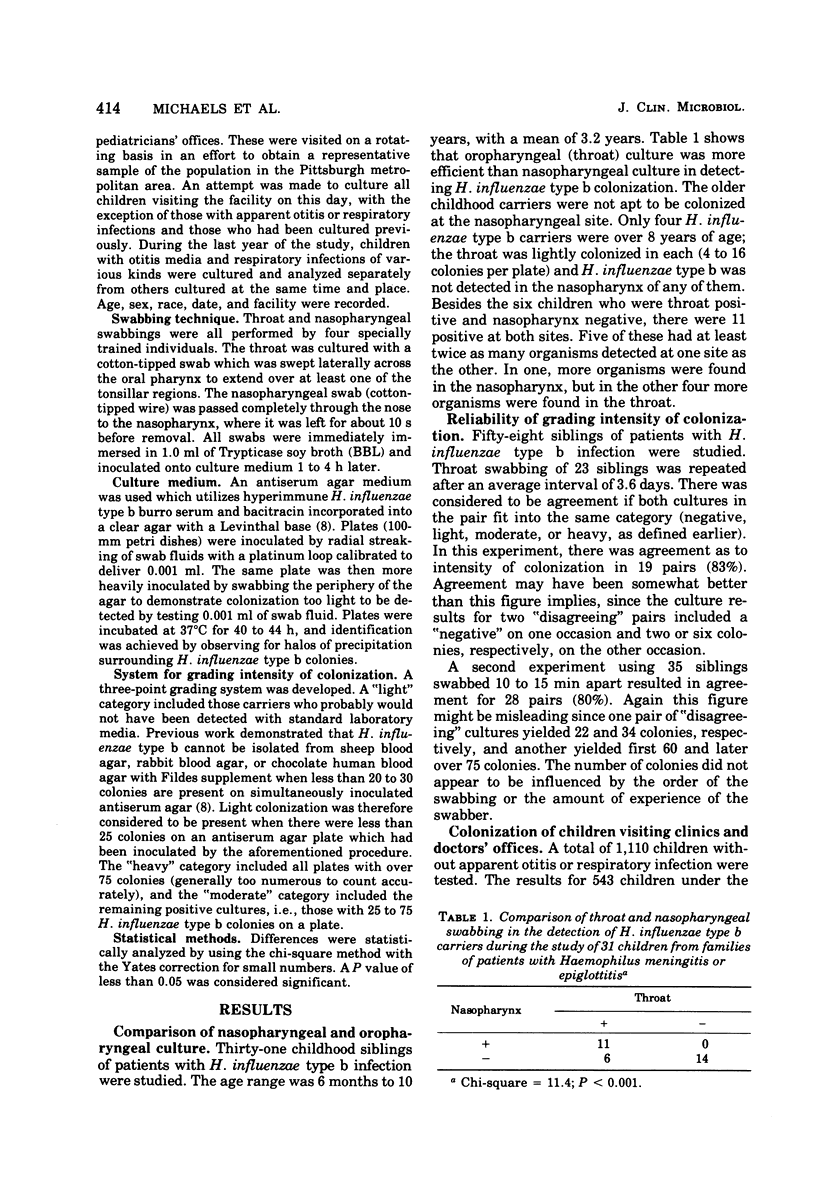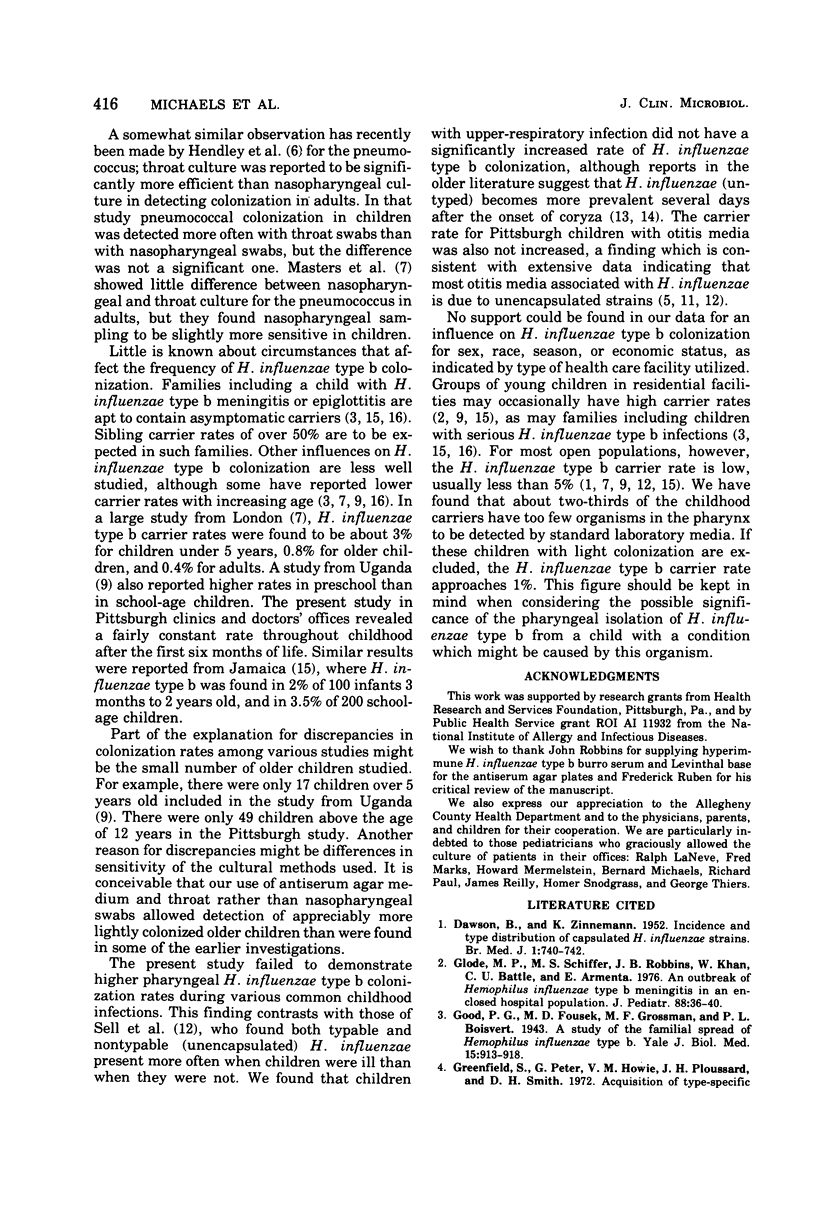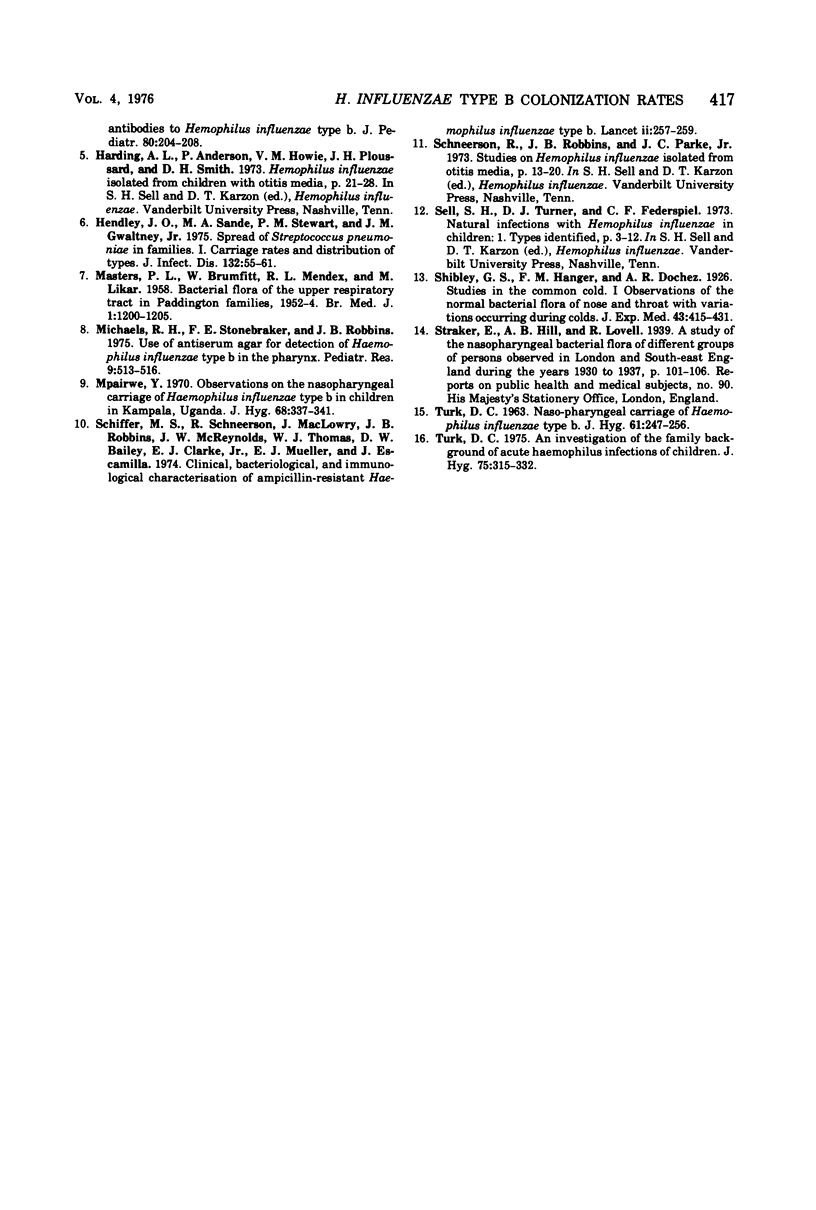Abstract
Over 1,300 children were studied in an analysis of factors that might affect pharyngeal colonization with Haemophilus influenzae type b. Our semiquantitative methods for the culture of H. influenzae type b, consisting of inoculation of 0.001 ml of throat swab fluid on antiserum agar plates and division of the results into three grades of intensity, showed agreement as to intensity of colonization in over 80% of repeat throat cultures. Our data also suggest that throat swabs are more efficient than nasopharyngeal swabs for detecting colonization, particularly for older children. All 17 H. influenzae type b carriers found with either method were detected with throat swabs, but six had negative nasopharyngeal cultures; four of these six were lightly colonized older children. Furthermore, colony counts were apt to be higher on plates inoculated with throat swab fluids. The frequency of pharyngeal H. influenzae type b colonization in children visiting health department clinics and pediatricians' offices was low during the first 6 months of life (0.7%) but averaged 3 to 5% throughout the rest of childhood. Approximately two-thirds of the carriers were colonized at an intensity too low to be detected by standard laboratory techniques. No influence on colonization rates was found for sex, race, season, economic status, or common childhood infectious diseases such as coryza or otitis media.
Full text
PDF




Selected References
These references are in PubMed. This may not be the complete list of references from this article.
- DAWSON B., ZINNEMANN K. Incidence and type distribution of capsulated H. influenzae strains. Br Med J. 1952 Apr 5;1(4761):740–742. doi: 10.1136/bmj.1.4761.740. [DOI] [PMC free article] [PubMed] [Google Scholar]
- Glode M. P., Schiffer M. S., Robbins J. B., Khan W., Battle C. U., Armenta E. An outbreak of Hemophilus influenzae type b meningitis in an enclosed hospital population. J Pediatr. 1976 Jan;88(1):36–40. doi: 10.1016/s0022-3476(76)80723-8. [DOI] [PubMed] [Google Scholar]
- Greenfield S., Peter G., Howie V. M., Ploussard J. H., Smith D. H. Acquisition of type-specific antibodies to Hemophilus influenzae type b. J Pediatr. 1972 Feb;80(2):204–208. doi: 10.1016/s0022-3476(72)80579-1. [DOI] [PubMed] [Google Scholar]
- Hendley J. O., Sande M. A., Stewart P. M., Gwaltney J. M., Jr Spread of Streptococcus pneumoniae in families. I. Carriage rates and distribution of types. J Infect Dis. 1975 Jul;132(1):55–61. doi: 10.1093/infdis/132.1.55. [DOI] [PubMed] [Google Scholar]
- MASTERS P. L., BRUMFITT W., MENDEZ R. L., LIKAR M. Bacterial flora of the upper respiratory tract in Paddington families. 1952-4. Br Med J. 1958 May 24;1(5081):1200–1205. doi: 10.1136/bmj.1.5081.1200. [DOI] [PMC free article] [PubMed] [Google Scholar]
- Michaels R. H., Stonebraker F. E., Robbins J. B. Use of antiserum agar for detection of Haemophilus influenzae type b in the pharynx. Pediatr Res. 1975 May;9(5):513–516. doi: 10.1203/00006450-197505000-00010. [DOI] [PubMed] [Google Scholar]
- Mpairwe Y. Observations on the nasopharyngeal carriage of Haemophilus influenzae type b in children in Kampala, Uganda. J Hyg (Lond) 1970 Jun;68(2):337–341. doi: 10.1017/s0022172400028783. [DOI] [PMC free article] [PubMed] [Google Scholar]
- Schiffer M. S., MacLowry J., Schneerson R., Robbins J. B., McReynolds J. W., Thomas W. J., Bailey D. W., Clarke E. J., Jr, Mueller E. J., Escamilla J. Clinical, bacteriological, and immunological characterisation of ampicillin-resistant Haemophilus influenzae type B. Lancet. 1974 Aug 3;2(7875):257–259. doi: 10.1016/s0140-6736(74)91416-0. [DOI] [PubMed] [Google Scholar]
- TURK D. C. Naso-pharyngeal carriage of Haemophilus influenza type B. J Hyg (Lond) 1963 Jun;61:247–256. doi: 10.1017/s0022172400020957. [DOI] [PMC free article] [PubMed] [Google Scholar]
- Turk D. C. An investigation of the family background of acute Haemophilus infections of children. J Hyg (Lond) 1975 Oct;75(2):315–332. doi: 10.1017/s0022172400047331. [DOI] [PMC free article] [PubMed] [Google Scholar]


